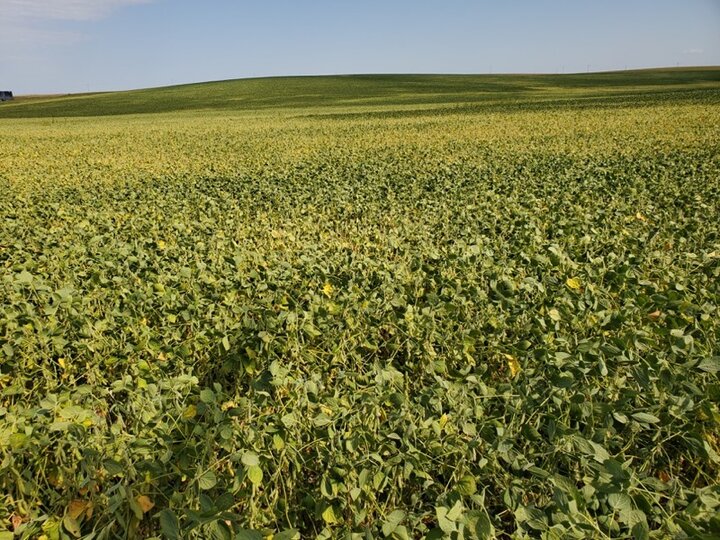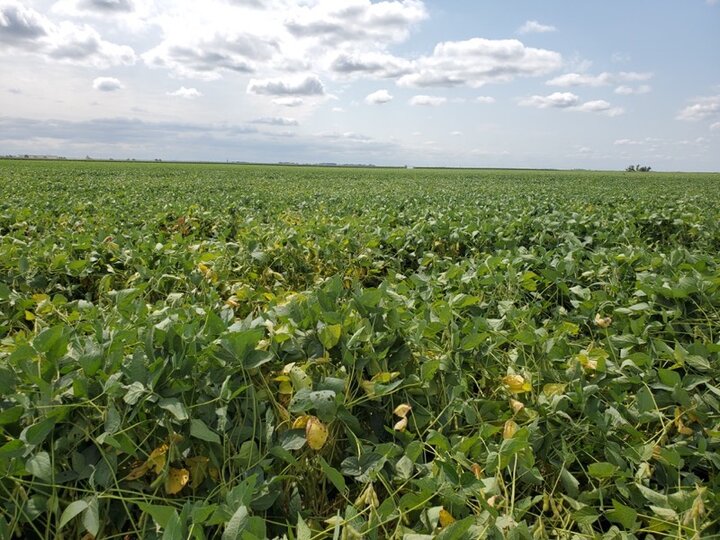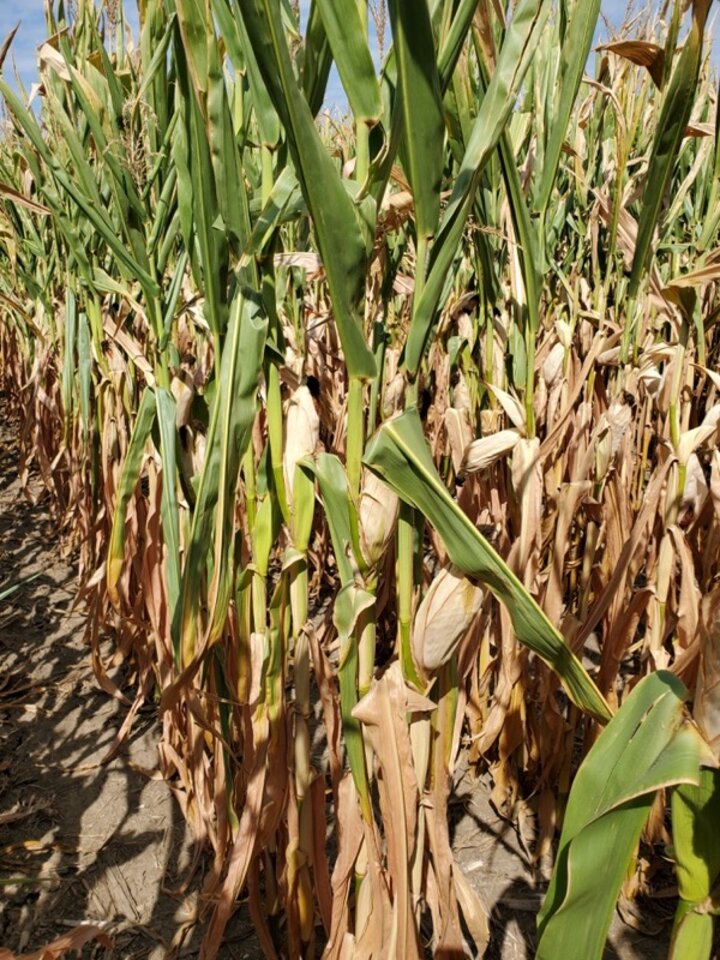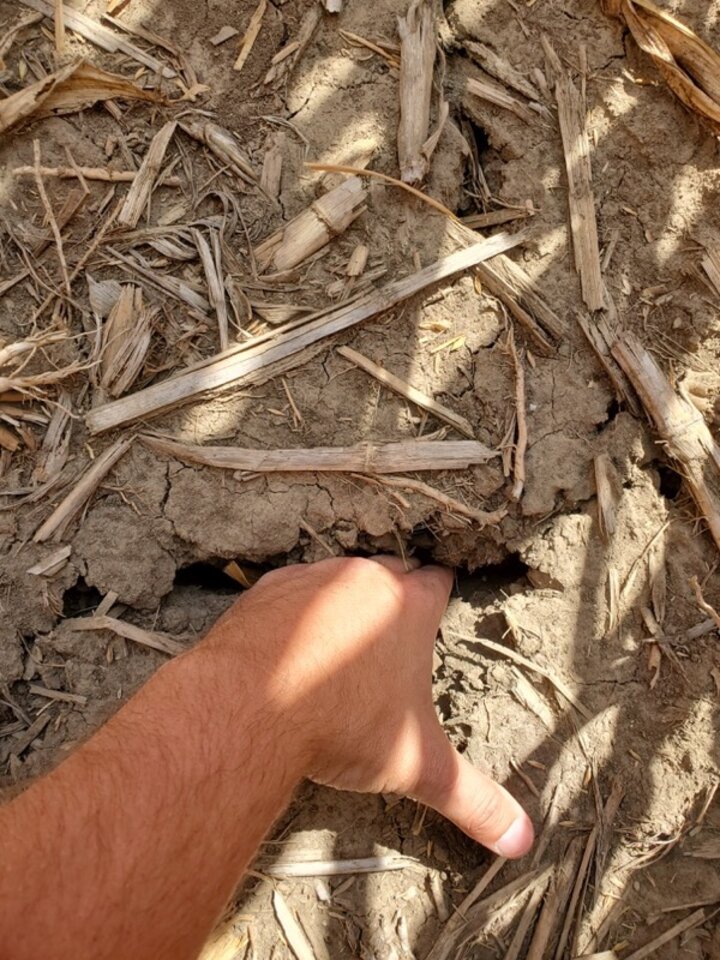Nathan Mueller
Extension Educator in Lancaster (interim), Saline, Jefferson and Gage Counties
Most cornfields are already 1/2 to 3/4 milk line (R5 – Dent Stage) with some fields or parts of fields already at black layer (Figure 1). There is quite a bit of variability in maturity within cornfields due to a combination of soil variability and the recent hot and dry weather pushing maturity (Figure 2). Rainfall totals for the month of August ranged from 0.25 inches in northeast Gage County to over 2 inches in western Jefferson County. However, the UNL Mesonet weather stations near Plymouth and Firth are still showing good soil moisture at 40 inches deep. Southern rust pressure is still very noticeable in some cornfields. However, the rainfed corn crop still looks pretty good overall (Figure 3).
Most soybeans are in the R6 or full seed growth stage, with a range in maturity from R6 to R7 (beginning maturity). There is still some light defoliation occurring from Japanese beetle and grasshoppers. Rainfed soybeans are showing varying degrees of drought stress from small isolated areas to nearly field-wide (Figure 4). Irrigating soybeans is still in full swing in the area.
Grain sorghum growth stages ranges from late soft dough to hard dough (Figure 5) and the crop looks good overall. Some producers are taking a 4th or last alfalfa cutting this week on some fields including those they plan to terminate or those with good growth after third cutting. Growers have planted forages (Figure 6), a cover crop, or fall-seeded alfalfa in many of the mid-July harvested wheat fields. Pasture conditions have also deteriorated over the past two weeks.
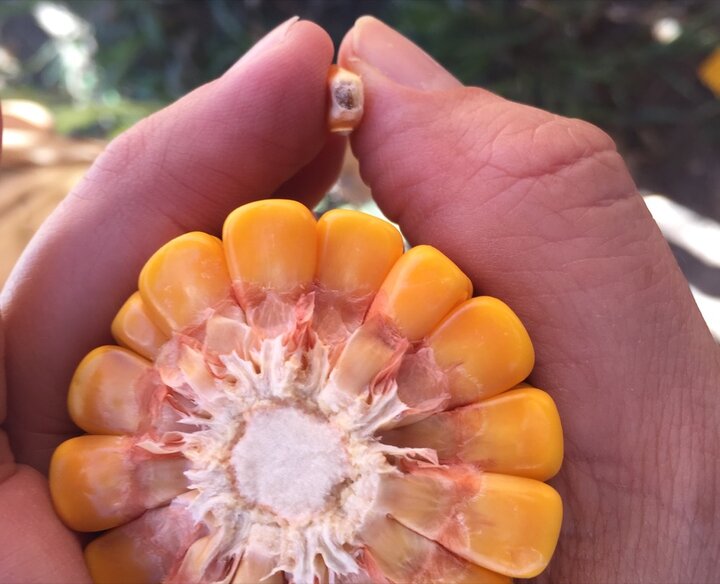
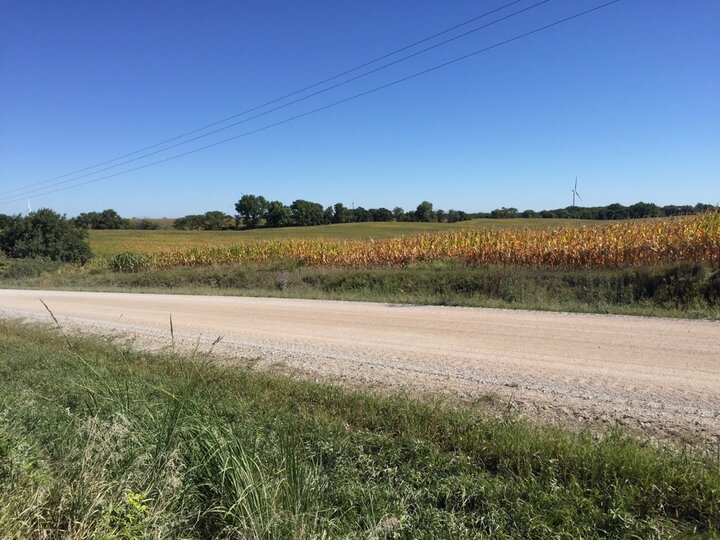
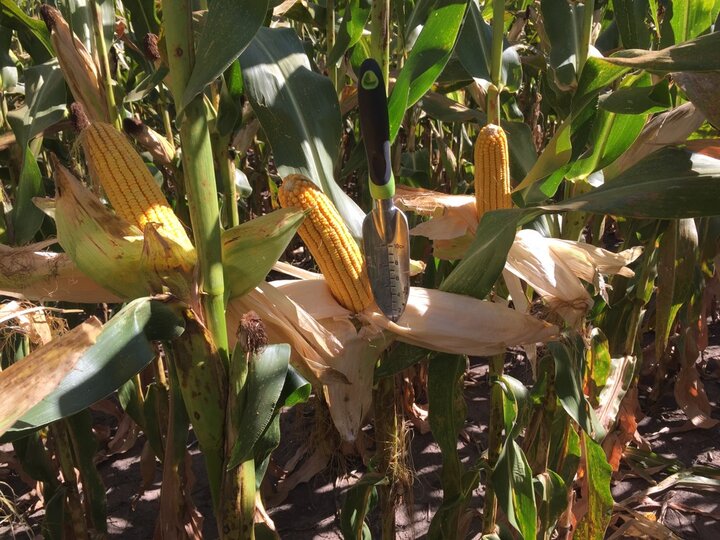
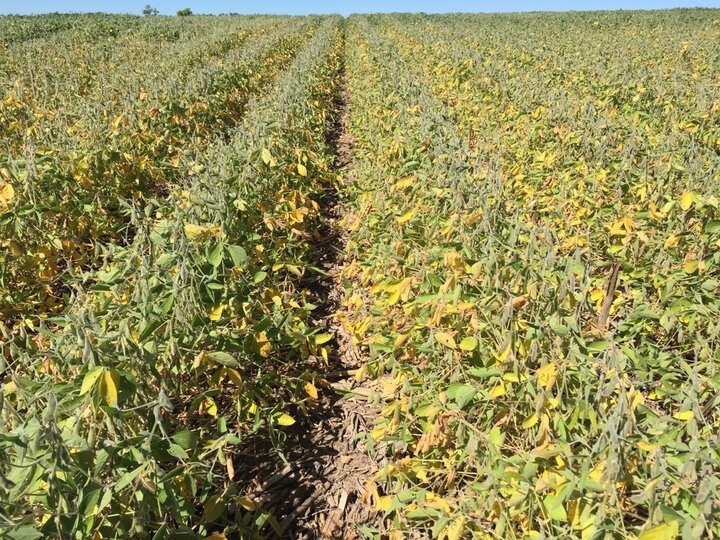


Sarah Sivits
Extension Educator in Dawson, Buffalo and Hall Counties
Across our region of the state, corn is in dent and is drying down quickly. There is still plenty of grain left to fill and due to a lack of precipitation, irrigation systems have been running non-stop. Silage harvest has started in the area and folks are checking their fields to determine when their last irrigation of the season will take place. Seed corn harvest is also under way in the area. I have seen southern rust pustules that have started to develop into black teliospores on the leaf surface. Ears are starting to droop over, especially in dry areas of the field. I have noticed some tip-back on some ears and ear molds just starting to develop where feeding occurred.
Soybeans under irrigation still look good but on pivot corners or sandier soils, they are starting to drop their leaves and dry down rather quickly. Pods feel a little light in these areas so it will be interesting to see how yields look at harvest. I am seeing some sudden death syndrome in the area too.
Fourth cutting of alfalfa is growing and some fields look better than others depending on how old it is and how close the roots are to moisture. There are several fields that are being replanted this year or torn up right now to prepare for next year.
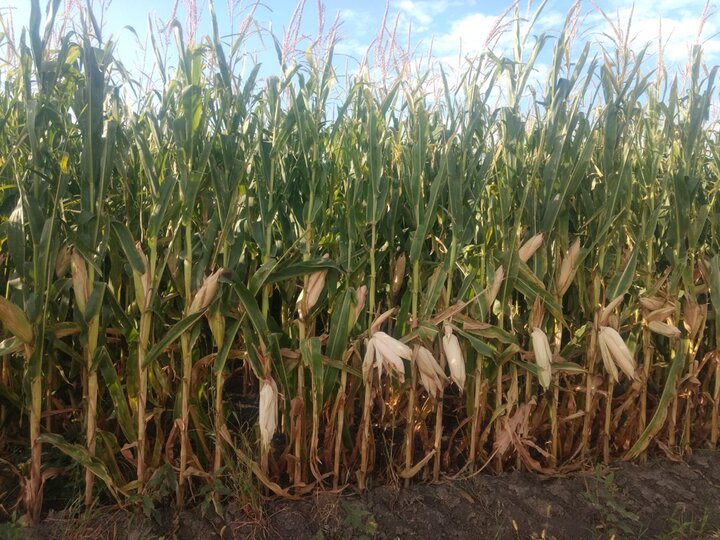
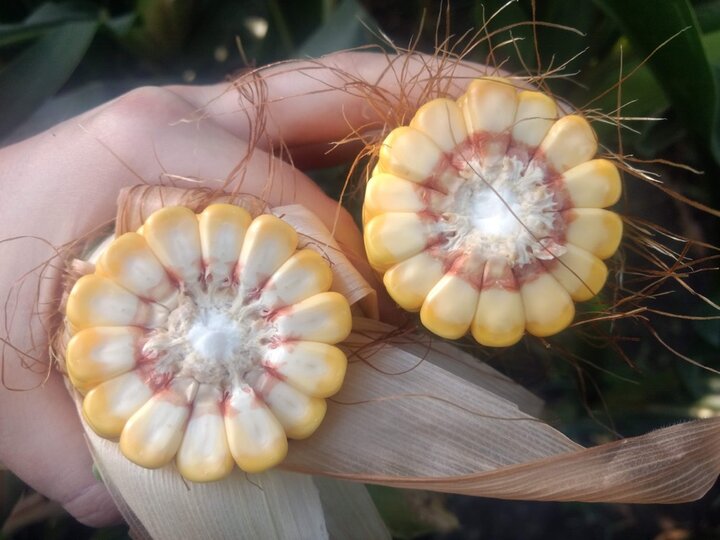
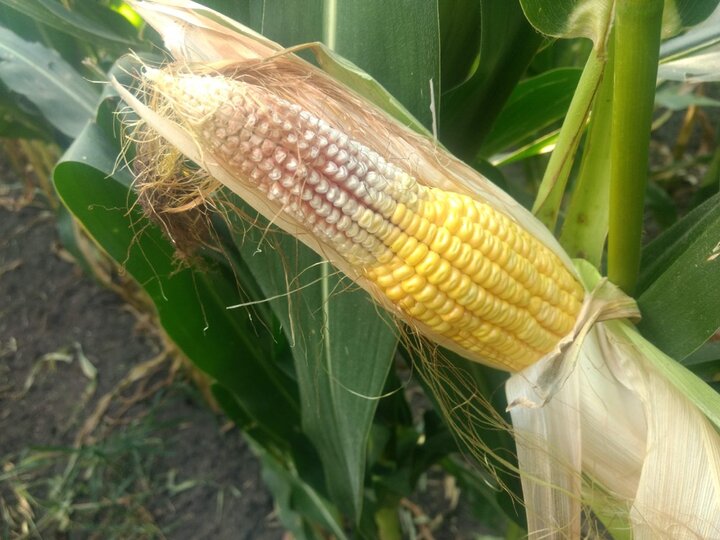
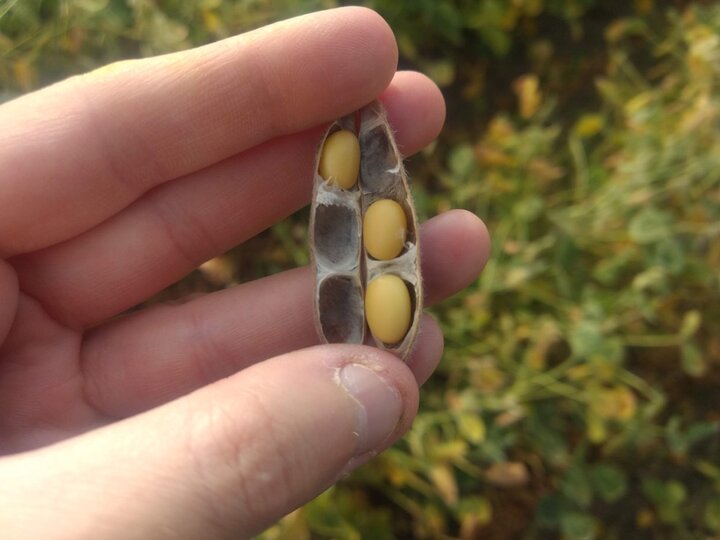


Aaron Nygren
Extension Educator in Colfax, Stanton and Cuming Counties
Last week’s hot weather accelerated the maturity of crops in the area. Corn across the area is mainly R5 with milk lines ranging from ¼ to almost black layered. Dryland corn is variable, with plants where the ear has prematurely drooped next to plants that are still green and ¼ milk line. Chopping has been ongoing with some fields being planted to cover crops afterwards.
Soybeans are mostly R6 or later with a lot of dryland beans turning yellow from drought stress. Frogeye leaf spot has become more noticeable in irrigated soybean fields.
